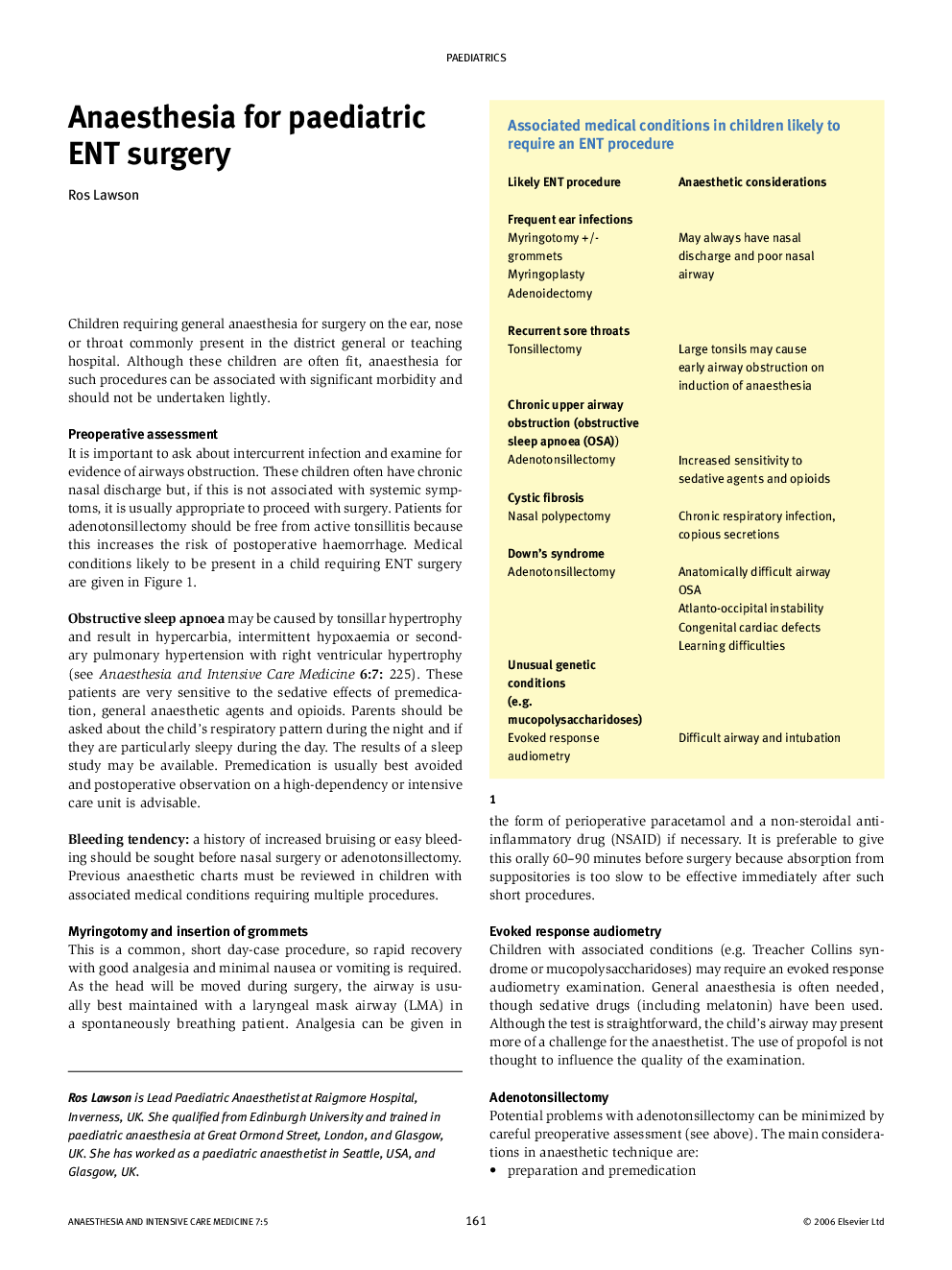| Article ID | Journal | Published Year | Pages | File Type |
|---|---|---|---|---|
| 2743282 | Anaesthesia & Intensive Care Medicine | 2006 | 4 Pages |
Children requiring anaesthesia for surgery on the ear, nose or throat (ENT) account for a large proportion of the paediatric anaesthetic workload in the district general or teaching hospital. Most of these children are otherwise healthy, but there are also patients with syndromes and genetic disorders that need regular ENT input (e.g. Treacher Collins, Down's or the mucopolysaccharidoses). Anaesthesia for these children represents a significant challenge and the anaesthetist should be aware of all the implications of the disease. This article concentrates on commonly performed ENT procedures and reviews anaesthetic techniques and strategies for prevention of postoperative vomiting (POV). Adenotonsillectomy is often performed to relieve recurrent tonsillitis or the symptoms of obstructive sleep apnoea (OSA). The main anaesthetic concerns are: analgesia, POV, and risk of postoperative haemorrhage. Patients with OSA are particularly sensitive to opiates and sedative agents, and may require postoperative observation on a high-dependency or ICU. The laryngeal mask airway is used by some anaesthetists for airway management and have the advantages of decreased lower airway soiling by blood but may make surgical access more difficult. The ‘bleeding tonsil’ is a surgical emergency. The main anaesthetic implications are: a potentially hypovolaemic child, a full stomach of swallowed blood, repeat anaesthesia, a potentially difficult airway. Anaesthesia for this should be undertaken by the most senior anaesthetist available. Day-case tonsillectomy has been performed for a number of years in North America and Canada. It is now increasingly considered in the UK primarily for socio-economic reasons. This needs to be done safely with carefully considered patient selection, parental information and an anaesthetic and surgical technique to minimize postoperative side effects. Middle ear and auditory canal procedures are reviewed briefly.
